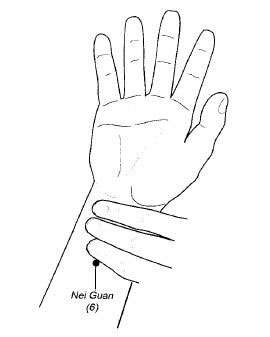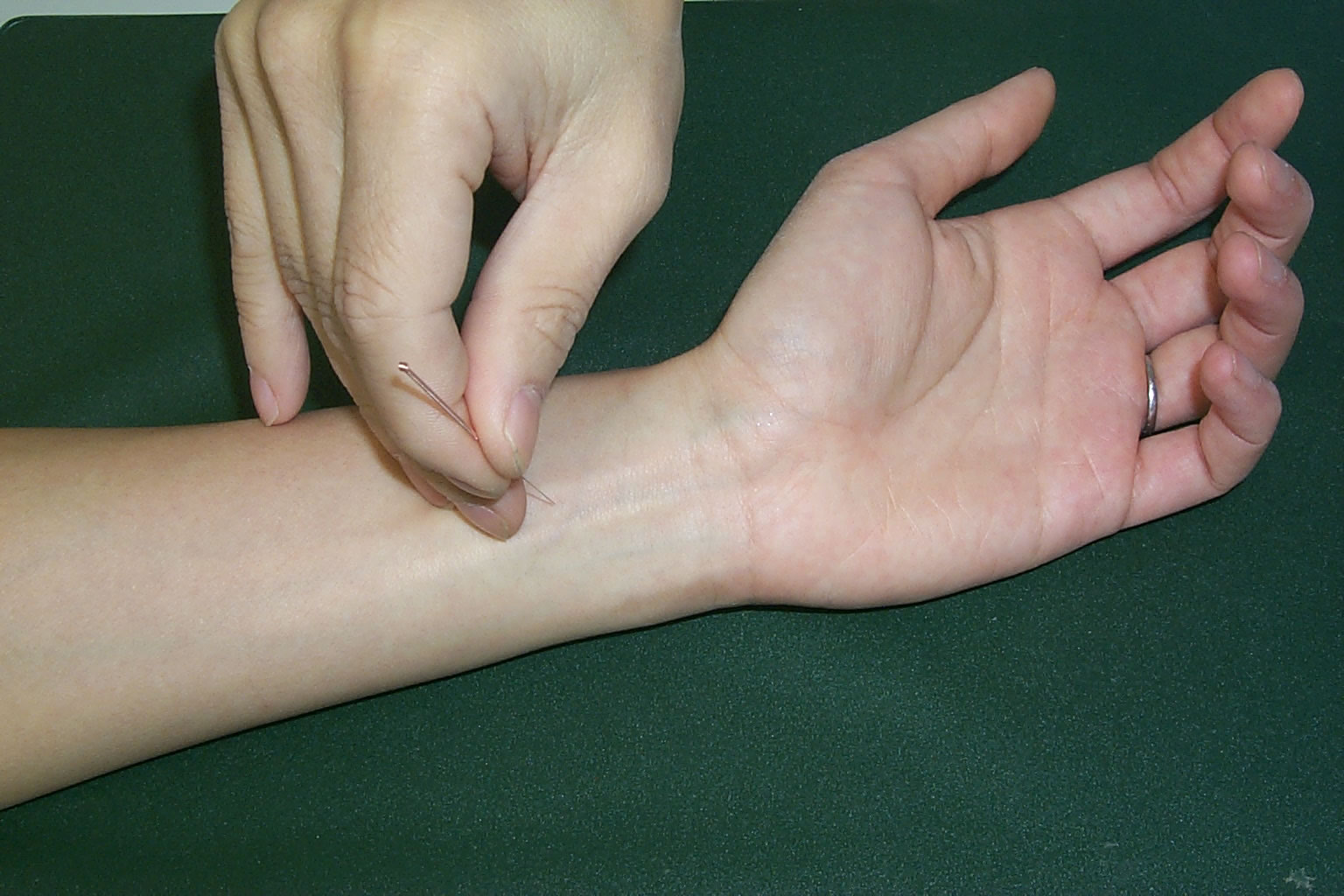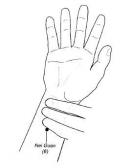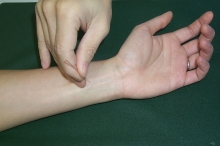CUHK
News Centre
Acupuncture Prevents Postoperative Nausea and Vomiting Effectively
Postoperative nausea and vomiting are common complaints after surgery, with up to 80% of patients being affected. It is unpleasant and can last for up to 24 hours after surgery. Postoperative vomiting after surgery can occasionally cause dehydration and in rare cases, tearing or reopening of the surgical incision. Traditionally, anaesthesiologists use antiemetics (drugs used to prevent or alleviate nausea and vomiting) in patients susceptible to getting nausea and vomiting after surgery. However, the cost and side-effects of these antiemetics have raised interest in finding alternative ways to prevent the symptoms.
Patients receiving stimulation at the Pericardium (P6) acupuncture point (acupoint) on the wrist will have a reduced risk of nausea and vomiting after surgery, according to a review done in 2008 by Professor Anna LEE, Associate Professor, Department of Anaesthesia and Intensive Care at The Chinese University of Hong Kong (CUHK). The P6 acupoint is located 5cm beneath the wrist crease. Common methods of stimulating the P6 acupoint include needle acupuncture, transcutaneous nerve stimulator, laser stimulation and acupressure wristbands.
In order to investigate whether P6 acupoint stimulation is effective when compared to either sham (placebo) or antiemetic treatment to prevent postoperative nausea and vomiting, researchers from CUHK evaluated nearly 4,500 patients who had undergone a variety of surgical procedures from 1986 to 2008. There were 32 studies involving 3,385 patients who were randomly divided to receive P6 acupoint stimulation or sham treatment. There were also 14 studies involving the remaining 1,036 patients who were randomly divided to receive P6 acupoint stimulation or antiemetic treatment.
Results found that compared to sham treatment, stimulation of the P6 acupoint reduced the risk of nausea and vomiting after surgery, with fewer side-effects. These side-effects were self-limiting and minor, such as redness and irritation at the puncture site with acupuncture; red indentation, itching and blistering when wristbands were worn; and tiredness when electro-acupuncture was administered. For every 100 patients receiving sham treatment, about 80 would still vomit or feel sick after surgery. This fell to 56 when P6 acupoint stimulation was used. In head-to-head comparisons with antiemetics, P6 stimulation was equally good at reducing the risk of postoperative nausea and vomiting.
To conclude, P6 acupoint stimulation can be used as a suitable alternative or an addition to antiemetic therapy before, during or after surgery. Since needle acupuncture on the P6 acupoint must be administered by registered acupuncturists, the acupressure wristband is preferred by many people for various reasons: ease in use, convenience in purchase and no need for an acupuncturist. The Department of Anaesthesia and Intensive Care at CUHK is considering the use of acupressure wristbands before surgery and transcutaneous nerve stimulator after surgery (in addition to current antiemetic drugs) for the prevention of postoperative nausea and vomiting in highly susceptible patients.
The study was recently published in the current issue of The Cochrane Library (www.cochrane.org).







